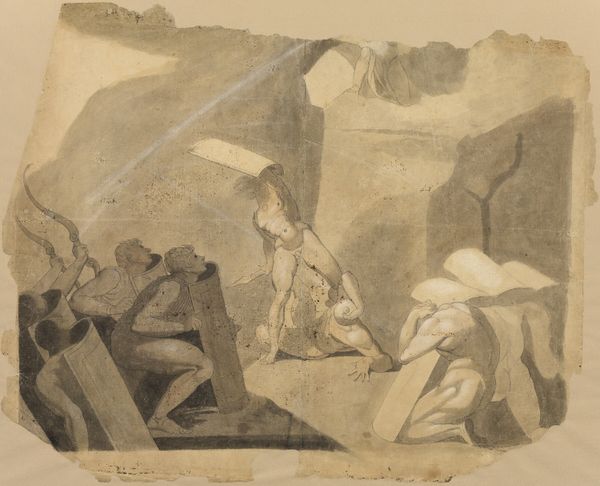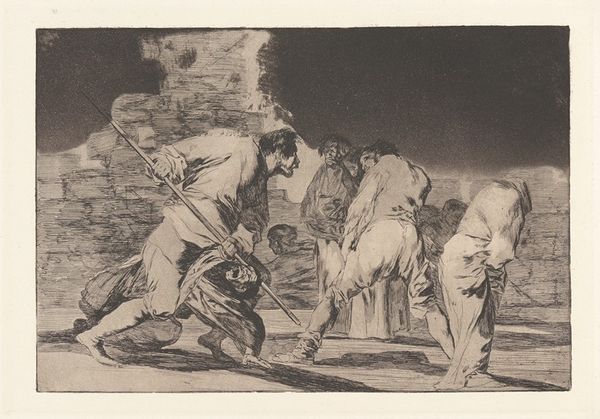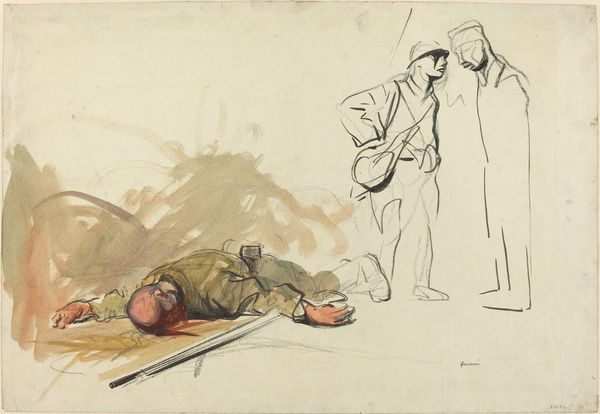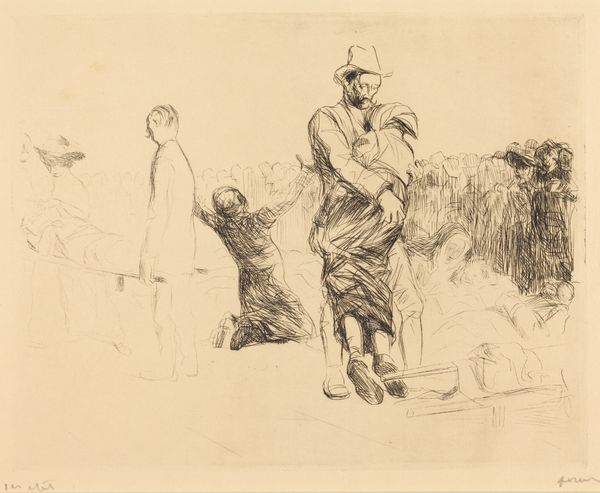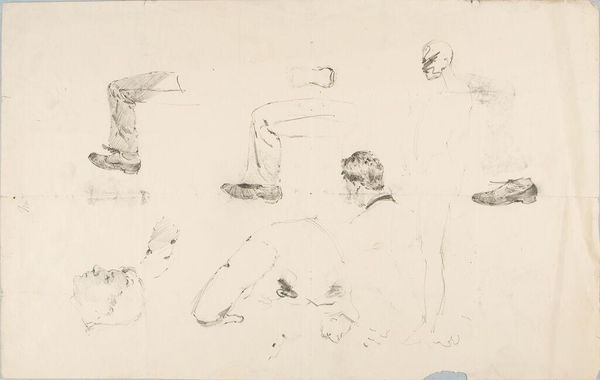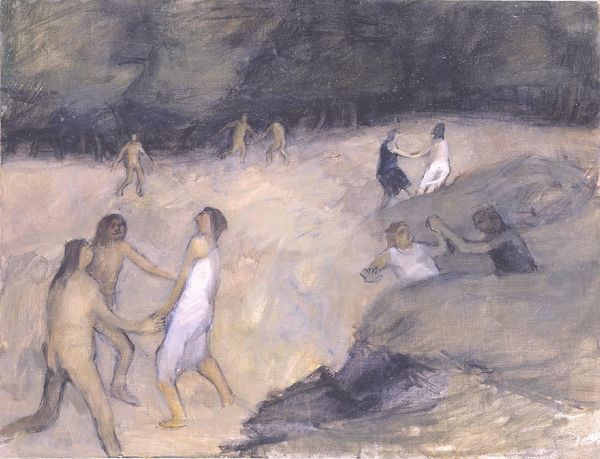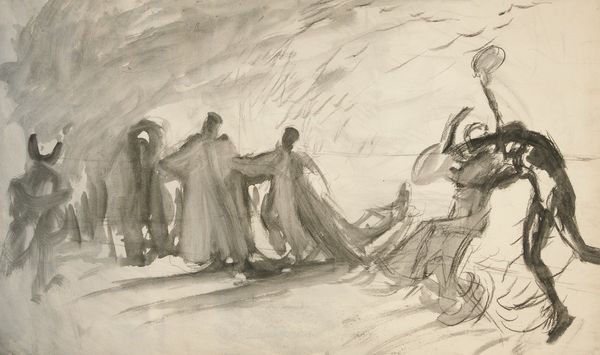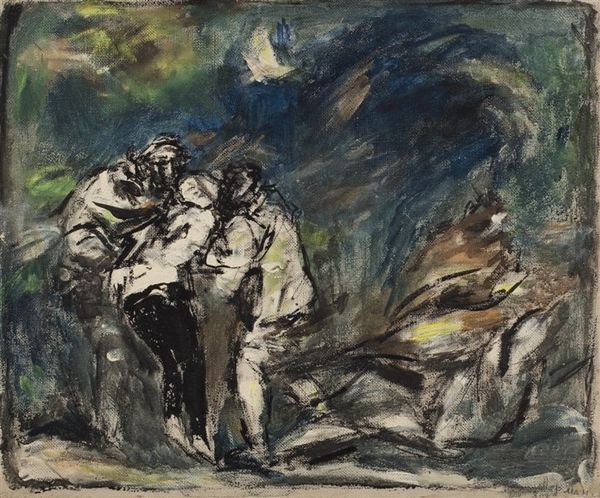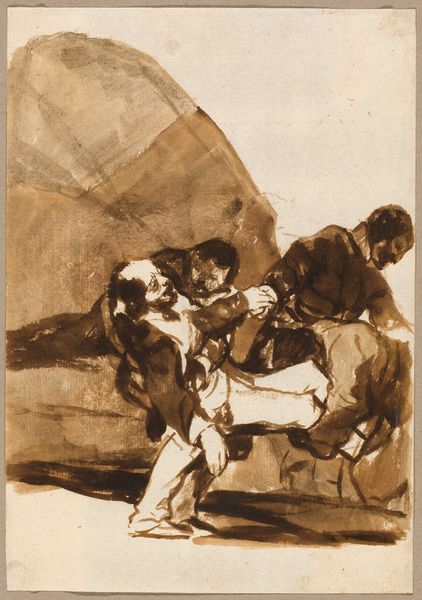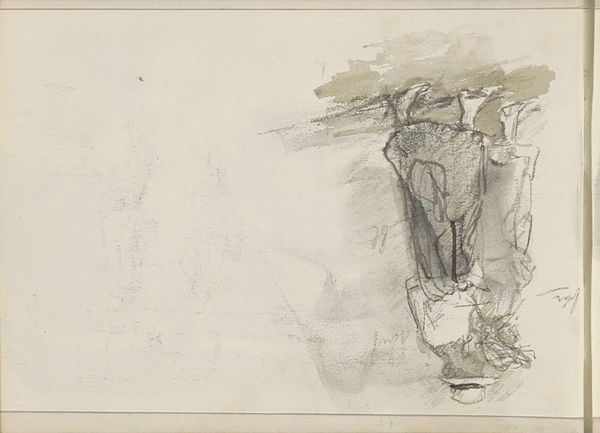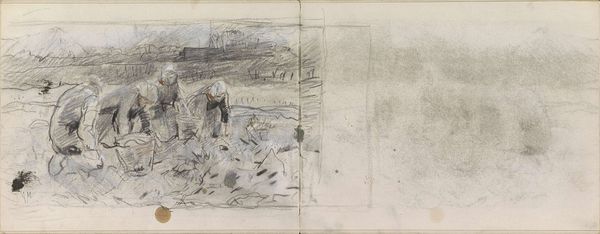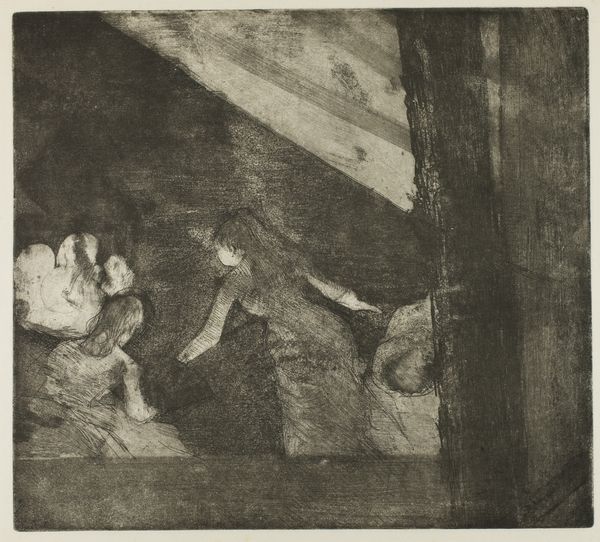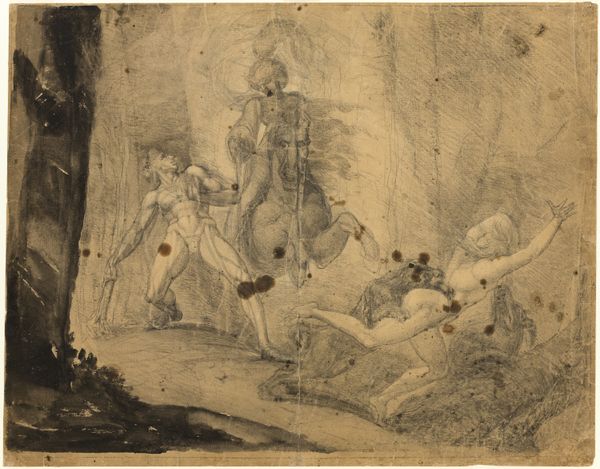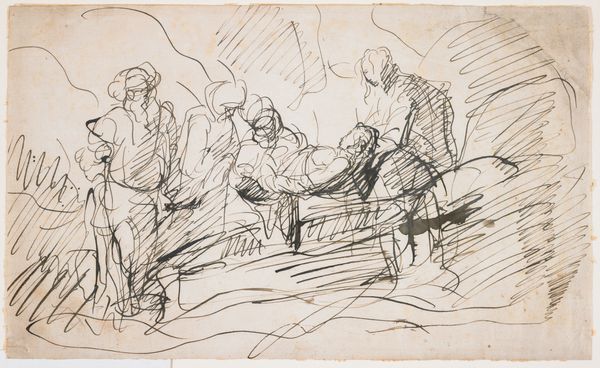
drawing, watercolor
#
drawing
#
impressionism
#
charcoal drawing
#
watercolor
#
watercolour illustration
#
genre-painting
#
realism
Dimensions: height 414 mm, width 595 mm
Copyright: Rijks Museum: Open Domain
Editor: This is Pieter de Josselin de Jong’s “Smederij,” made sometime between 1871 and 1906. It seems to be a drawing, perhaps in charcoal and watercolor. The muted tones give it a somewhat somber, industrial feel. What stands out to you? Curator: It's interesting how De Josselin de Jong captures the daily life of laborers during this period. The depiction of the blacksmith's shop raises questions about the social and economic realities of the working class in the Netherlands at the time. Consider the figures themselves—their bodies bent in labor, seemingly anonymous. What does their anonymity suggest about the value, or lack thereof, placed on individual workers? Editor: That's a powerful point. I hadn’t thought about the workers’ anonymity. Curator: The scene also operates within the history of art itself. We see a rise in Realism coinciding with major social upheavals. How might this piece challenge or reinforce established power structures, not only through the scene depicted, but by selecting *this* subject for artistic interpretation in the first place? What conversations do you think it attempts to engage in? Editor: Maybe it is making the invisible, visible, celebrating work as a worthy subject? It invites me to reflect on how labor is valued - or not - even today. Curator: Precisely! And how art can be a vehicle for social commentary and a catalyst for change, pushing us to consider the complexities of power, representation, and lived experience. Editor: I am starting to see this drawing less as a historical snapshot and more as an ongoing conversation about work, worth, and representation. Thanks! Curator: Indeed! By interrogating the artwork’s context and implications, we become more aware of the social structures that shape both the art and the world around us.
Comments
No comments
Be the first to comment and join the conversation on the ultimate creative platform.
